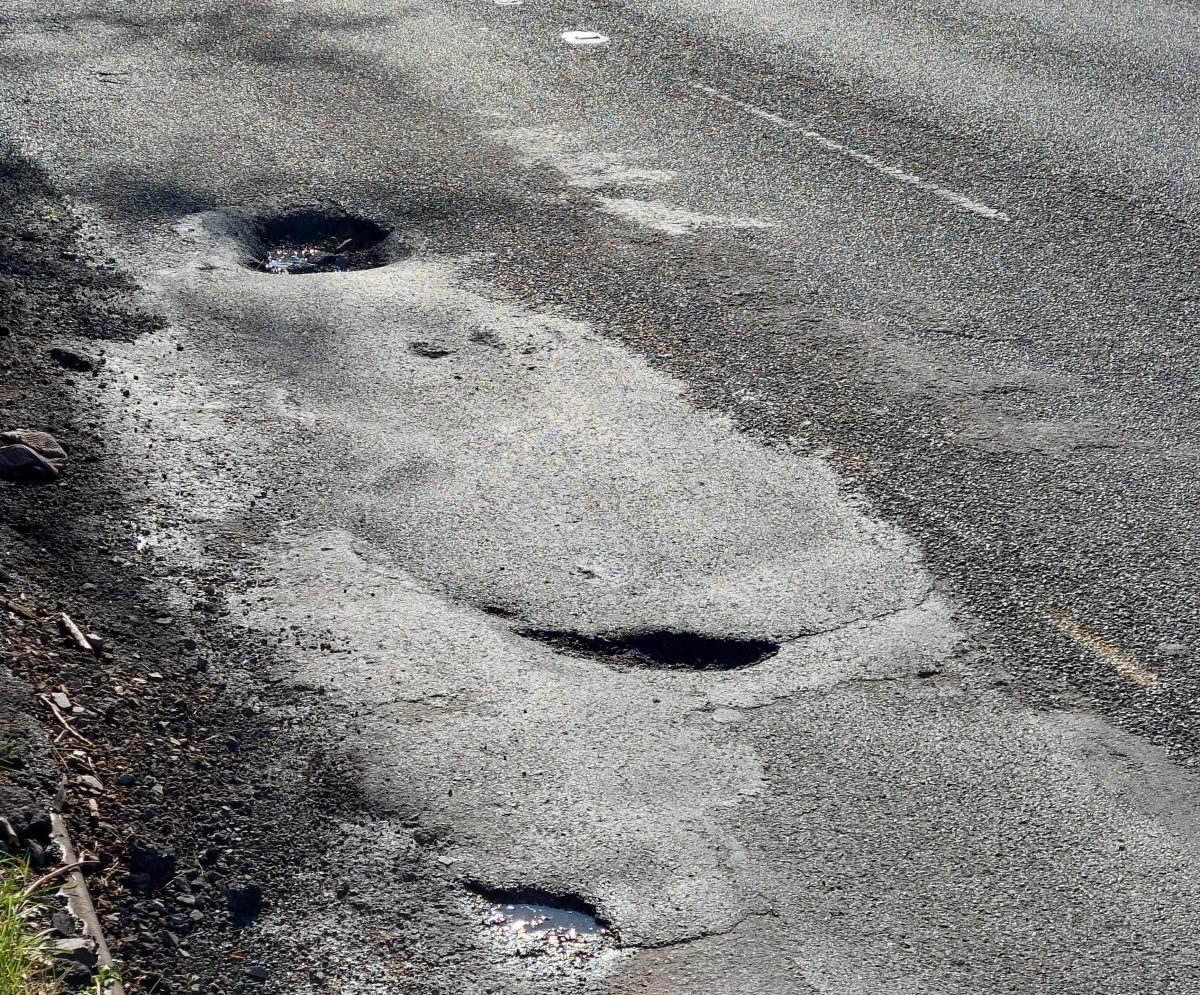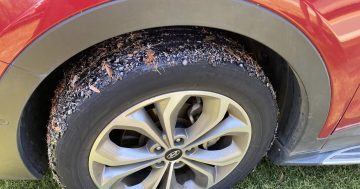
The bill for pothole damage this year is now at $43,000. Photo: Tegan Martin.
As potholes become a prevalent feature of the Territory’s roads, the Opposition has come out swinging at the government for what it says is a wholly inadequate road maintenance program.
The Canberra Liberals say Canberrans are paying too much in rates to put up with below-average roads.
Opposition spokesperson for city services Nicole Lawder said Canberrans expect the more it rains, the more likely potholes will occur.
But she said the frequency and scale of the current issue demonstrated more needed to be done to improve the city’s roads.
“It’s obvious the government has been failing to undertake proper road maintenance during warmer months and the state of our roads show the consequences of that,” she said.
“You don’t fix the roof on a rainy day yet that’s exactly the reactive, lazy approach this government is taking to road maintenance.”

Opposition spokesperson for city services Nicole Lawder has slammed the government’s road maintenance program, saying Canberrans deserve more. Photo: Region.
Ms Lawder said the rates paid by Canberrans meant it was “not unreasonable” for people to expect safe and usable roads in return, rather than the government having to pay out ratepayers’ money to compensate those whose vehicles are damaged.
Rates increased by an average of 3.75 per cent at the start of this financial year, as laid out by the government’s tax reform program.
In estimates earlier this year, the government revealed it had already paid out over $43,000 to 50 motorists whose vehicles had been damaged by potholes in 2022. The average claim was $860.
This was an increase on 2020 when there were 16 claims ($9098) and last year when 40 claims were paid totalling $39,024.85.

Many potholes appear to have been mended multiple times. Photo: Region.
Potholes have become increasingly difficult for the government’s crews to stay on top of with the third consecutive La Niña event now underway.
It’s at least the second time this year the Canberra Liberals have slammed the Territory government over its inability to keep up with a repair program.
Minister for Transport and City Services Chris Steel has often responded by saying he cannot control the weather.
“A significant amount of rainfall is causing damage to roads right across the Eastern Seaboard and Canberra is no exception,” he said.
“While it’s raining we do try put in temporary repairs and patches … we’re putting more resources into this.
“As we head into the road-releasing program, we will be able to more permanently address some of those issues.”
But the Opposition argues the government must be better prepared and complete additional maintenance during dry periods.
A spokesperson for the ACT Government told Region last week Canberrans should drive to the conditions and report potholes so they can be quickly responded to if they pose an immediate safety concern.
“We are allocating all available resources to identify, assess and respond to road safety hazards. Repairing potholes in wet weather is challenging as the asphalt mix doesn’t settle,” the spokesperson said.
The government’s pothole repairs almost tripled from 2719 in the drier 2019/20 financial year to 6375 in 2020/21, when there were 3297 pothole-related submissions to Fix My Street.
It’s not yet known how many repairs have been completed this year.
Potholes are caused when water seeps into cracks which develop as roads age. This, combined with the continued stress imposed by the traffic flow, erodes the pavement and leads to potholes and major cracks forming.
Roads ACT says preventative resealing is the most cost-effective method of maintaining good road conditions.
Reactive hand patching is initially undertaken using ‘cold mix’ asphalt to repair potholes. Roads ACT then undertakes planned resurfacing works utilising ‘hot mix’ mechanised asphalt and bitumen chip seal to prevent potholes from forming in the first instance, Mr Steel said in response to a question on notice in 2020.
Canberrans are encouraged to fill out an online form at Fix My Street to alert authorities of the existence of a pothole.
The average turnaround time for resolving matters via the online portal last year was 52 days.
According to the government, potholes that pose an immediate safety threat are usually fixed within 48 hours of being reported.
















